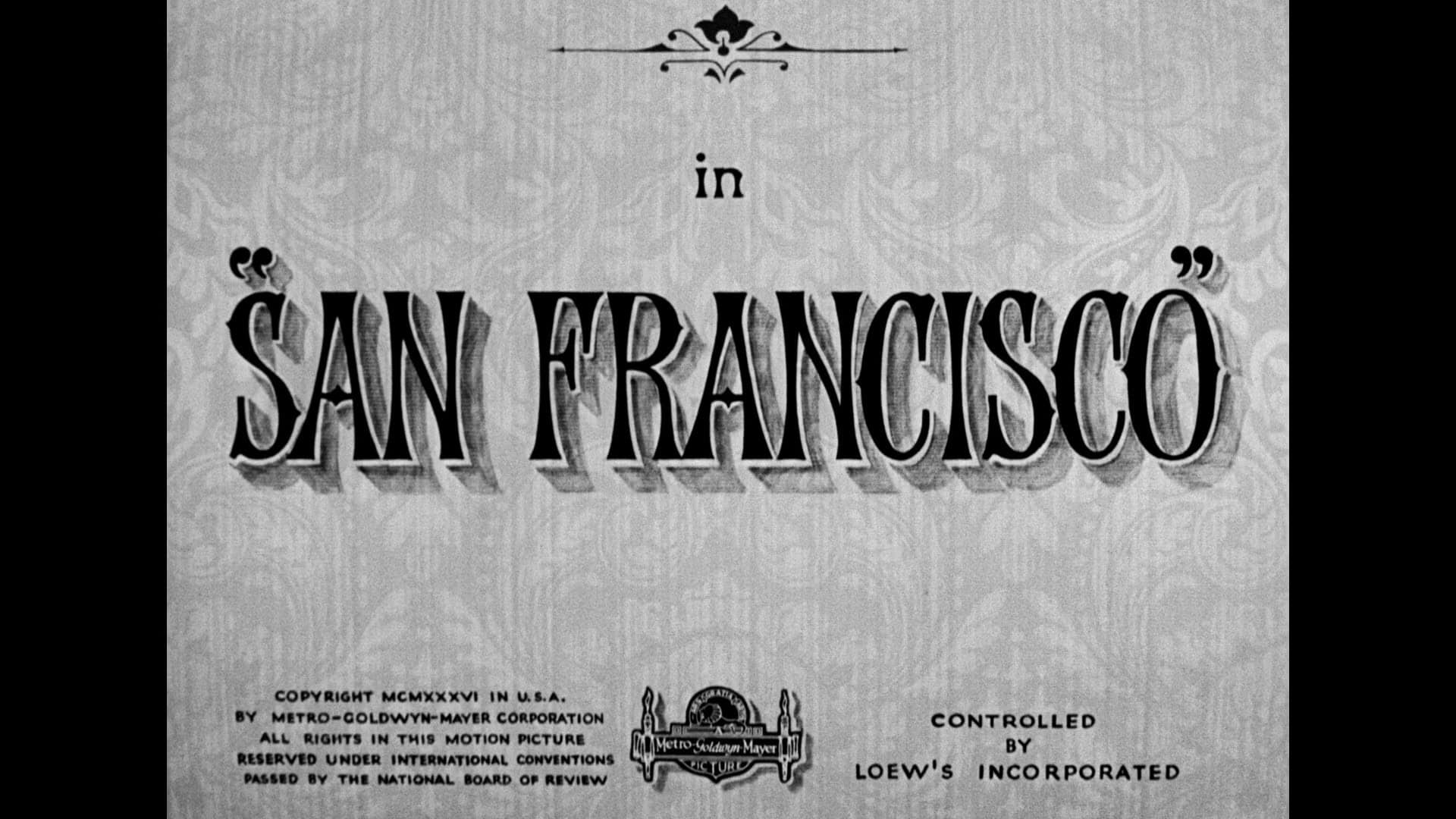San Francisco is a movie that was dated by the time World War II broke out. It’s most famous for its signature tune becoming one of the city’s anthems. Now, for the 95% of the country that doesn’t live in the Bay Area and has absolutely no ties to the home of Danny Tanner…what does all of this mean? Well, nothing. Outside of being one of the first Award winning overly dramatic disaster movies.
![San Francisco (1936) [Warner Archive Blu-ray review] 2 San Francisco (1936) [Warner Archive Blu-ray review] 1](https://andersonvision.com/wp-content/uploads/2021/03/san-francisco-1.png)
Clark Gable is at his most manliest when the film opens. To prove that he’s macho, we get to watch him box a priest. Spencer Tracy plays the good Father who loves having a knuckle dusting with his old buddy. They smack the hell out of each other and then drop some plot details. The gallery of extras who have are long since dead smile and cheer.
Gable runs a successful night club in the San Francisco Red Light District dubbed the Barbary Coast. For those of you not familiar with California history, the Barbary Coast was a real place that has long since became overpriced real estate for Silicon Valley scum. The city wants to clean up the Barbary Coast, but Gable and others say they are business people with the right to exist.
![San Francisco (1936) [Warner Archive Blu-ray review] 4 San Francisco (1936) [Warner Archive Blu-ray review] 3](https://andersonvision.com/wp-content/uploads/2021/03/san-francisco-2.png)
Disaster movies of all sorts juggle drama with spectacle. But, a movie like this uses the drama to build audience anticipation for what they know is going to come. At the time of release, the great San Francisco earthquake of 1936 was recent history. Many survivors and Californians helped work on the movie which was designed to be inspirational during the Great Depression.
Some of the first shots after the earthquake hits San Francisco is of giant homeless camps in the city park system. Following that you hear about the military coming down from the Presidio and rich people’s mansions being blown up to contain the wildfires. That’s when the nature of the movie is revealed. It’s a disaster movie that’s part nostalgia and part wish fulfillment for Depression audiences.
![San Francisco (1936) [Warner Archive Blu-ray review] 6 San Francisco (1936) [Warner Archive Blu-ray review] 5](https://andersonvision.com/wp-content/uploads/2021/03/san-francisco-3.png)
What’s weird as someone that lives out of San Francisco is trying to understand the impact of the film. Movies like Mank roughly touch on the impact of California politics of the era. The GOP controlled most of the studios and spent a great part of the 1930s killing the opportunities of any populist candidates. So, seeing movies like this weren’t that uncommon.
San Francisco is a tale of inspiration about how people can overcome anything with the aid of the military and the American government. The cast even stops the story long enough to sing The Battle Hymn of the Republic near the end of the movie. For lack of a better term, San Francisco was Depression era propaganda.
![San Francisco (1936) [Warner Archive Blu-ray review] 8 San Francisco (1936) [Warner Archive Blu-ray review] 7](https://andersonvision.com/wp-content/uploads/2021/03/san-francisco-4.png)
Warner Archive stacks San Francisco with special features. I was pretty shocked that the Blu-ray had this many supplemental materials. You get the alternate ending sequence and a documentary about Clark Gable. It’s a pretty solid doc narrated by Liam Neeson that’s been aired on TCM a few times. You’re not really going to learn anything new there. But, it’s a fun refresher on a classic Hollywood actor.
The San Francisco Blu-ray also comes with 2 vintage FitzPatrick traveltalks shorts about San Francisco. You get a classic cartoon and the reissue trailer. Plus, the A/V Quality is pretty impeccable. What is interesting is the DTS-HD 2.0 master audio mono track is appropriate, but a little hard to hear during dialogue scenes. If you’re into classic disaster movies, then Warner Archive has you covered.
![San Francisco (1936) [Warner Archive Blu-ray review] 9 san francisco 5](https://andersonvision.com/wp-content/uploads/2021/03/san-francisco-5.png)

![Baby Doll (1956) [Warner Archive Blu-ray review]](https://andersonvision.com/wp-content/uploads/2021/03/baby-doll-title.jpg)
![March 2021 DVD New Releases [Reviews]](https://andersonvision.com/wp-content/uploads/2021/03/yalda-dvd.jpg)